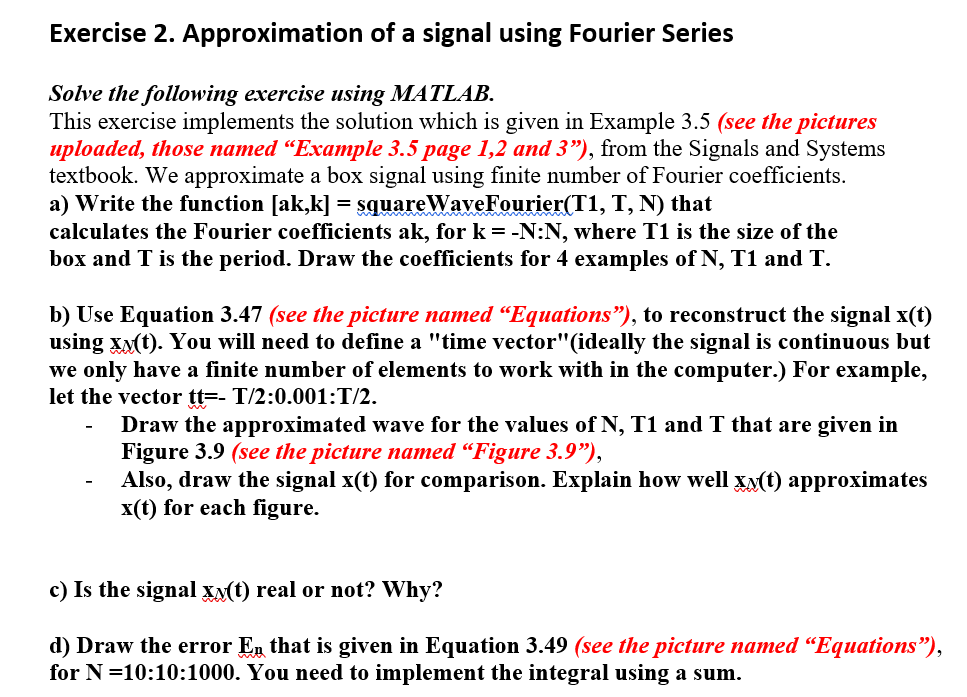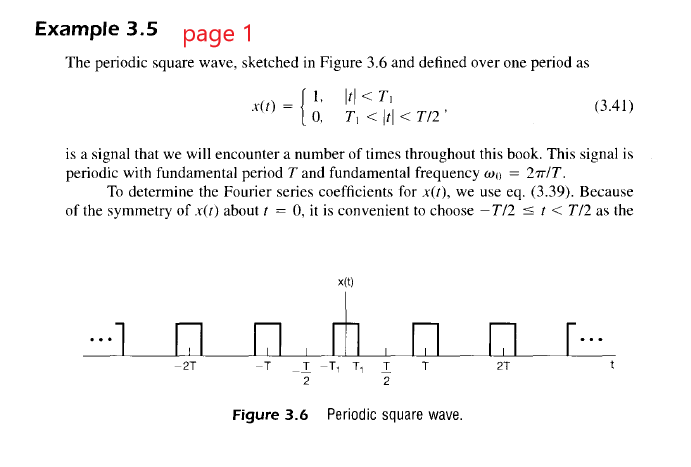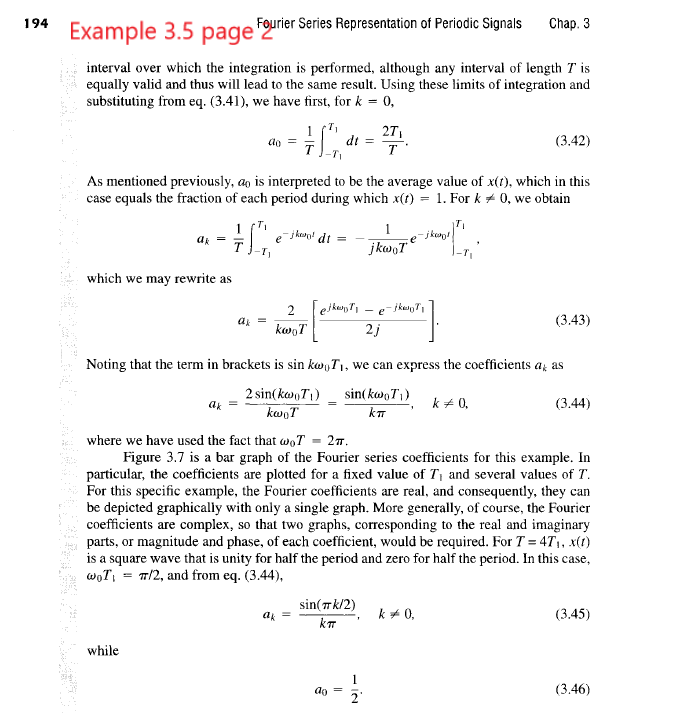





Exercise 2. Approximation of a signal using Fourier Series Solve the following exercise using MATLAB This exercise implements the solution which is given in Example 3.5 (see the pictures uploaded, those named Example 3.5 page 1,2 and 3"), from the Signals and Systems textbook. We approximate a box signal using finite number of Fourier coefficients. a) Write the function [ak,k] squareWaveFourier(T1, T, N) that calculates the Fourier coefficients ak, for k--N:N, where T1 is the size of the box and T is the period. Draw the coefficients for 4 examples of N, T1 and T b) Use Equation 3.47 (see the picture named "Equations"), to reconstruct the signal x(t) using xv(t). You will need to define a "time vector"(ideally the signal is continuous but we only have a finite number of elements to work with in the computer.) For example, let the vector tt-T/2:0.001:T/2. Draw the approximated wave for the values of N, T1 and T that are given in Figure 3.9 (see the picture named Figure 3.9"). Also, draw the signal x(t) for comparison. Explain how well x^(t) approximates x(t) for each figure. c) Is the signal x^(t) real or not? Why? d) Draw the error En that is given in Equation 3.49 (see the picture named "Equations"), for N-10:10:1000. You need to implement the integral using a sum Exercise 2. Approximation of a signal using Fourier Series Solve the following exercise using MATLAB This exercise implements the solution which is given in Example 3.5 (see the pictures uploaded, those named Example 3.5 page 1,2 and 3"), from the Signals and Systems textbook. We approximate a box signal using finite number of Fourier coefficients. a) Write the function [ak,k] squareWaveFourier(T1, T, N) that calculates the Fourier coefficients ak, for k--N:N, where T1 is the size of the box and T is the period. Draw the coefficients for 4 examples of N, T1 and T b) Use Equation 3.47 (see the picture named "Equations"), to reconstruct the signal x(t) using xv(t). You will need to define a "time vector"(ideally the signal is continuous but we only have a finite number of elements to work with in the computer.) For example, let the vector tt-T/2:0.001:T/2. Draw the approximated wave for the values of N, T1 and T that are given in Figure 3.9 (see the picture named Figure 3.9"). Also, draw the signal x(t) for comparison. Explain how well x^(t) approximates x(t) for each figure. c) Is the signal x^(t) real or not? Why? d) Draw the error En that is given in Equation 3.49 (see the picture named "Equations"), for N-10:10:1000. You need to implement the integral using a sum












